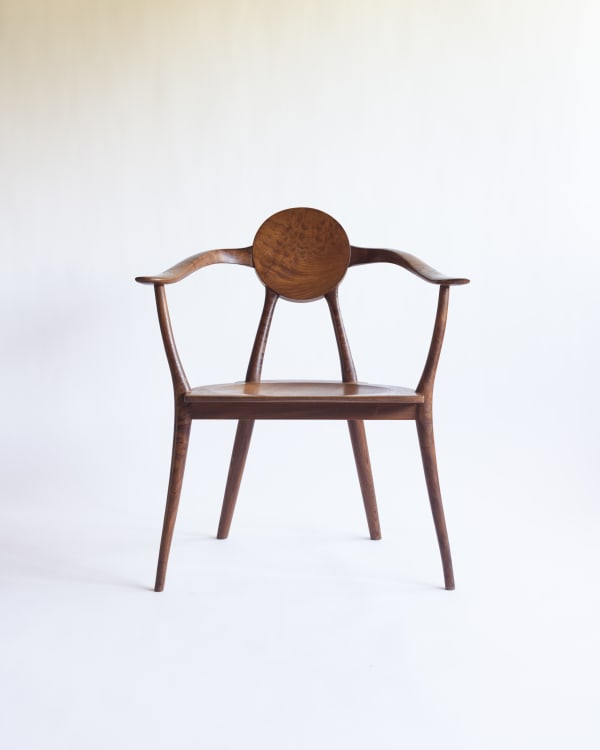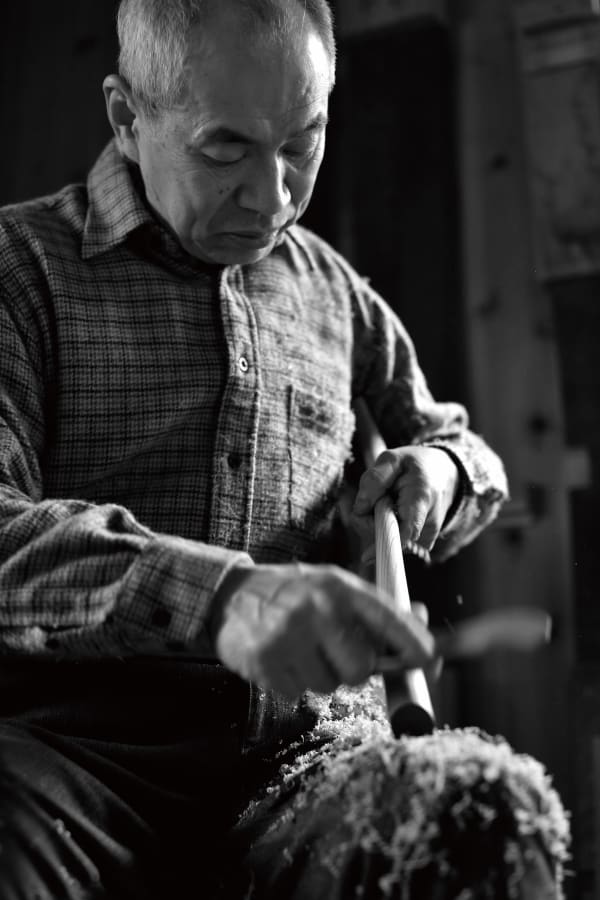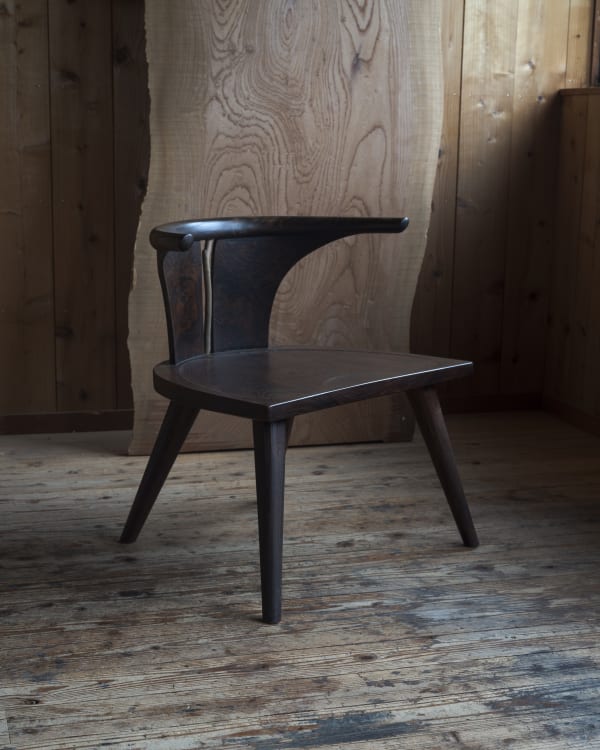Bring Forest Bathing to the Home: Chairs by Toshio Tokunaga
Bring Forest Bathing to the Home: Chairs by Toshio Tokunaga
Toshio Tokunaga (born 1952) is an artist whose expertise in furniture is uniquely attuned to the natural world. Precious Zelkova, mulberry, cherry, and cypress woods are all sourced with passion and dedication from local forests, then dried for decades. He delicately familiarizes himself with each rare tree's spirit, allowing him to develop a strong bond with the work.
Tokunaga can thus infuse each chair with this warm understanding. The rich, dark Kyoto chair is made from the vivid wood of a zelkova tree grown inside the Daitokuji Temple in Kyoto for the last 800 years. The Japanese word for zelkova is 'keyaki,' which is closely tied to 'keyakeki,' meaning prominent or outstanding, just as the wood stands strong.
Thousand Years chair pairs zelkova with chestnut wood, colors interloping in shades of darkness, while Vibrato Chair Triple uses Japanese Yosino cedar, cultivated over 500 years in the warm climate of Yoshino area of Nara prefecture, with gentle but rigid forests. In contrast, Ganpi Shi Rocking Chair uses the mulberry tree for flexibility, a wood that darkens as it oxidizes for an old-world feel. Twists of washi paper, also made from Japanese mulberry, create the seat.
After sourcing wood, tinder is cut using the Kanna hand plane tool to clean and correct imperfections, pulling towards himself instead of pulling away. The blade is made from the same sharp plane used for samurai swords, but this is a profoundly human sensory process: fingertips capture the flow of wood fibers and the sound of the wood as it falls, reminiscing the tree's journey from forest to table. No sandpaper is used, ensuring the smell of the forest still pervades, fresh and alive with the original grains and veins of the wood as it breathes. Over time, this process creates an even stronger and more beautiful lifelike surface, down to the wood's core.
Tokunaga makes his own Kanna tools to achieve his uniquely directed curves and lines, resulting in perfected edges unmatched by machinery, and finishes with three brushed coats of Hassui Ceramic durable glass he developed to create a water-resistant barrier.
He trained under Living National Treasure Hekigai Takeuchi, who did not allow him to touch wood during the first five years of his training period. Instead, each piece initially began with the curvatures of golden forms from the ancient bronze wares of the Shang dynasty (c. 1600 BC – c. 1046 BC). Tokunaga would relentlessly use tracing paper on the wares until the designs resonated with the unique styles of the finished wood products. Because of this intensive study of lines, forms, and curves from ancient wares, his crafting approach is a fast, churning movement as natural as dancing. It is his contemplations.
Amidst the unpredictability of the pandemic, bringing nature home acts as a cure for the uncertainty. The healing properties of forest bathing overcome the sitter as the chair envelops body and soul, awash in the relaxation and tranquility found in the protection of the deep woods. The positive energy of the gathering and crafting process is poetry of sorts, a way to reconnect with the outdoors from the inside.
























